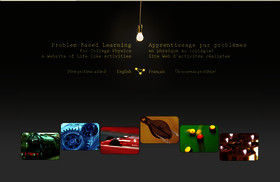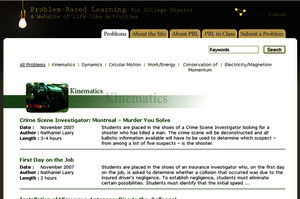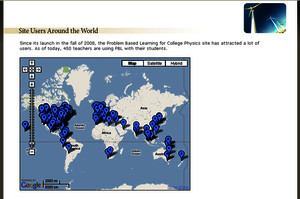The World-wide Impact of Problem-based Learning
When I was a student, I took an astrophysics class that was very different. Instead of lectures, we received problem based learning (PBL) scenarios. The experience was so incredible that when I started teaching college physics, I designed PBL science labs for my students. In traditional labs, you are given a procedure: a list of steps to follow, like in a cookbook. Students are told how to collect data, how to link variables and hence how to solve the problem. Students then work to understand the steps to follow, often without really understanding what or why they are following them. Yet, the science process is not following a recipe but creating a clear experiment that will allow you to test a hypothesis or understand a phenomenon. If there is a science problem to solve, shouldn’t the students be the ones writing the procedure? In PBL, there is a real-world problem to solve, so the students have to come up with a procedure..

Nathaniel Lasry is the creator of the CCDMD’s site to form a community of users of problem based learning.
My lecture sections typically have forty or more students, making PBL small groups very difficult to manage. However, each lecture section is broken into two lab sections of about 20 students. In a lab, you can have 6-7 groups of 3-4 students. Seeing that I could implement PBL in the lab sessions, I started designing laboratory activities that were very different from the step-by-step recipe-like typical science lab procedure.
For example, typically students are given cookbook procedures to learn 2-dimensional motion. Instead, I designed a PBL ballistics scenario from a virtual crime scene investigation. I traced a white tape contour of a virtual corpse on the floor. Thanks to the police technology department at John Abbott, I was able to get 9mm slugs (i.e. bullets without gunpowder). Our technicians then drilled a hole into a piece of wood at precise ‘entry angles’ and inserted the 9mm slugs. That angle could then be measured (using a procedure that students have to devise). Ultimately, making a few assumptions and using the data in the scenario and in the actual physical space, students would be able to determine the shoulder height of the bad guy and eventually figure out whodunnit.

On the Table of Contents you can read descriptions of the PBL scenarios available on the site.
This is very different from traditional labs. The first thing students have to figure out is what the problem was! What were the variables to look for? How can we find them? There can be many solutions to the problem, which shows students that science is not a rigid set of procedures but a flexible means of designing experiments and making measurements to answer questions. Instructors no longer wonder if the students get the procedure because they designed it!
The major issue I faced was that designing these PBL problems was like writing a little novella. Great fun, but virtually impossible to do every time you want to teach a class… I figured if I was going to write a semester’s worth of problems with my students the following year, I’d be stuck reusing them because I couldn’t recreate a whole new set every year. It also occurred to me that I couldn’t be the only person interested in PBL. There had to be others who had written PBL activities. The ideal way to get their work was to offer mine. With the help of the CCDMD, we created an online PBL resource (www.ccdmd.qc.ca/en/pbl) where I offered my activities and solicited people from around the world to contribute their own. The vision was more akin to creating an online community of users that could use and share, take and contribute PBL problems. In principle, it could be open to any discipline.

The User Map allows you to see the incredible geographical range of the PBL site.
Besides writing a scenario, each author writes a detailed teachers’ guide which outlines the resolution of the process step-by-step and what to expect when giving this activity in a classroom. These teachers’ guides are password-protected, so that students can’t get a hold of them. To access the guide, you must submit a password-request from a faculty institutional e-mail. This allows us to determine who and where users are located. We’ve created a map showing everybody around the world that has been using these activities with a Google map widget. We have hundreds of teachers around the world, and new requests on a daily basis.
Thanks to spectacular work from folks like Veronica Gill at the CCDMD (from language editing to graphic design and online services) our site has become a true world-wide resource. Hundreds of instructors from the Americas to Africa, from Europe through Asia to Australia have accessed our site and its password-protected teacher-guides. To date however, our contributors are a few physics professors in Quebec such as Camille Cyr from Cégep Maisonneuve, Christian Heon from Victoriaville, and Sébastien Marcotte from Montmorency.
So if you know anyone interested in using PBL or even in contributing an activity, do feel free to visit our site! All PBL activities are offered in French and English.

